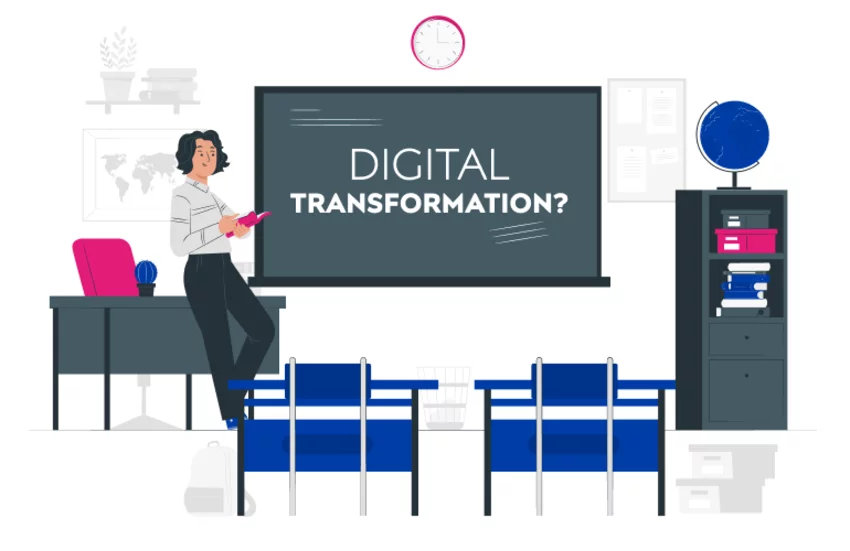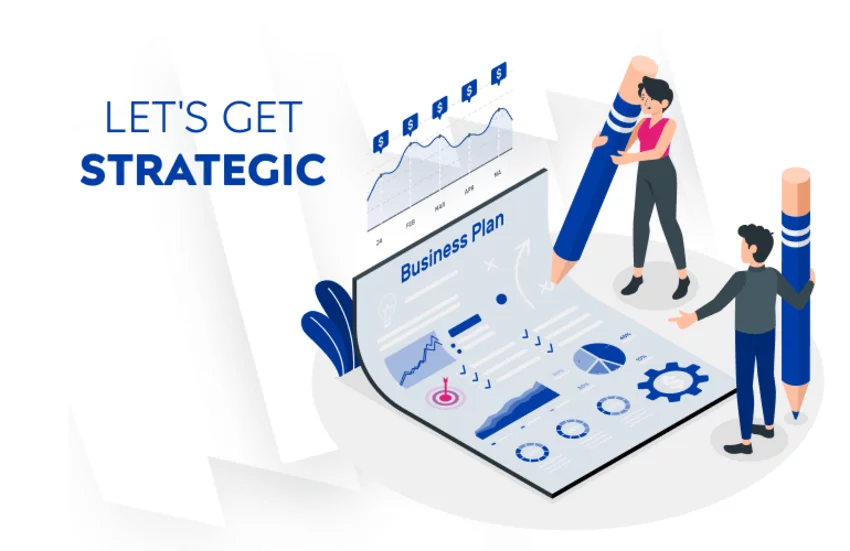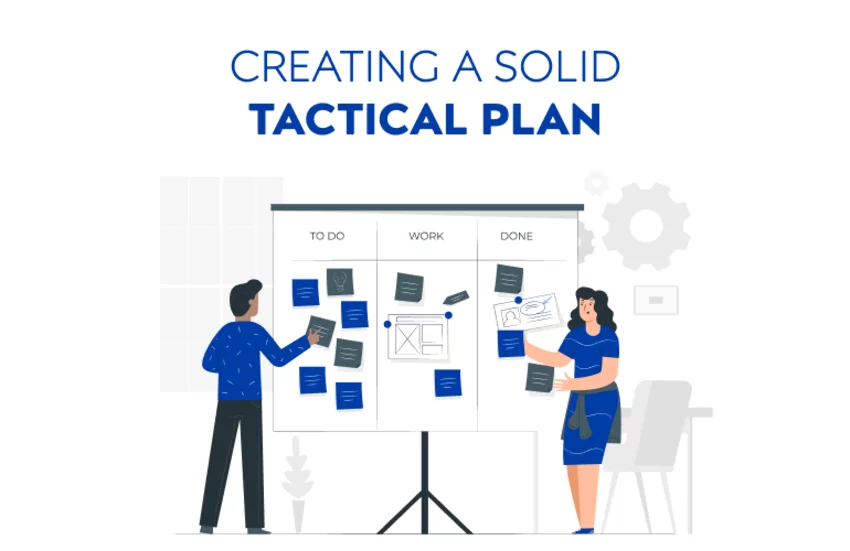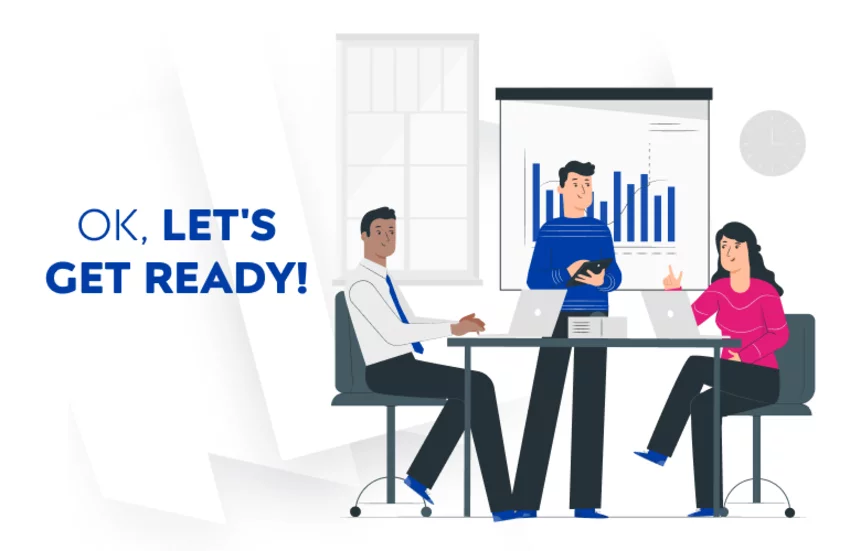How to begin your digital transformation journey in 8 steps
Digital transformation has become one of the most important topics discussed in business today. It offers fundamental change to an organization with the purpose of setting the organization on a path to success.
To bring this whole topic closer to you, we’ll define digital transformation as a process of cultural, organizational, and operational change of an organization.
It’s a complex process that requires correct answers to some complex questions, but we’ll try to make it easier for you with this article.
In this article, you’ll find out more about how to start your digital transformation journey in just a few steps, so stay with us.
Before we get started, we’d like to point out that we’ve been participating in transforming companies and have been doing so successfully. We’re a professional Pimcore development agency, stating that we’re seeing Pimcore as an objectively the best platform for digitally transforming your company.
If you’d like our help during the process of transforming your company, reach out to us and we’ll gladly help.
And now, let’s jump in!
Step 1: Determine the meaning of digital transformation to your organization
Even though at first glance it may seem simple, it’s crucial to establish what digital transformation means for your organization.
There is no universally accepted definition of digital transformation, meaning that the transformation process may differ greatly from organization to organization. There are many factors that should be taken into account.
Also, there are many different stages of transformation regarding each segment of your organization, so you’ll need to determine what do you want to change.
First of all, it’s important to look at the big picture and define why do you need digital transformation and what kind of novelties can it bring to your organization.
To help you understand digital transformation even more, check out our article about omnichannel in retail where besides omnichannel, we talked about some myths of digital transformation. That will help you clarify some points so consider reading it after you’ve soaked up all the knowledge in this article.
Some key factors you need to consider are:
- Industry and its maturity
- Your competitors
- Your customers
- Value chain
- Your challenges
Once you have determined why your organization needs to undergo digital transformation, you’re good to go. This will help you to more carefully define your strategies and identify which resources are you going to use.
Next, you need to assess your current situation and capabilities, so let’s move on to the next step and make it a bit more clear.

Step 2: Assess your current situation
So, once you’ve found your reasons for digital transformation, you’ll need to take a look at the current state of your organization and it’s each and every component.
In this step, we’ll outline what are the key components you’ll need to assess during your digital transformation.
Strategy and company leadership
If you’re just starting out, think about the following:
- Do we have a strategy for digital transformation?
- Did we create an implementation plan?
- How much will it cost?
- What are our starting points?
We’ll discuss digital transformation strategies more in-detail in one of the following chapters, but before you do anything else – take notes and objectively assess the situation your company is in.
This assessment will function as a foundation for every next move you take.

Technology
Technology plays an important role in digital transformation, as it forms the new business ecosystem that your organization will be a part of. It’s a necessary part of every digital transformation process, regardless of the industry.
Here are some questions that will help you define your current state:
- Have we updated the technologies and platforms that we’re already using?
- Do we have any ideas for improvement?
- Which technologies are we using currently?
- What kind of technologies we might use in the future?
- Do we have a team dedicated to updating our technology?
Every change happens gradually, and so does the change in technology in your organization. There is no need to compare your company’s technology level 1 with other company’s technology level 5.
For instance, you don’t need to start using new technologies such as artificial intelligence and machine learning if you haven’t updated your current digital technologies.
This process may take even a few years and there’s no shortcut. Every change, including the technology in your organization, happens gradually and must be carefully planned.
Operations
To be exact, this component is highly connected to the previous one.
The most important question you could ask yourself regarding operations is – are our processes efficient?
If they are, how can you improve them even more? And if they aren’t efficient, what can you do to change that?
The key to efficiency is automatization of repetitive tasks and this is where technologies such as artificial intelligence and machine learning come in handy.
Data management
Data is the most important asset of your organization, especially during the journey of digital transformation. Having high-quality digital asset management will ensure that you’re successfully leveraging all of your data.
When you’re just starting out, here are some questions you could ask yourself:
- Is our data organized?
- Are we analyzing data?
- Do we have a team dedicated to data analysis?
- What kind of technologies are we using to analyze our data?
- Are we in possession of all the needed data?
These questions are straightforward and after you answer them, you’ll be able to easily assess your current situation and even outline your goals concerning data. Also, consider reading our article on data silos and ways to get rid of them in order to cut some unnecessary expenses. Furthermore, check out our article on eCommerce analytics that will help set you on a right track concerning data analysis.
There are many different tools and technologies available and you should always strive to use more advanced and intelligent tools.
Customer experience
The final goal of all of your efforts is to provide ultimate customer experienced. When it comes to digital transformation, customers take the center stage.
Customer experience isn’t just the responsibility of one department. Rather, it belongs to the whole organization and every department.
Experience you’re providing to your customers needs to be of the highest quality. It will guide your customers through an already outlined customer journey. As an additional resource, we have prepared for you a guide to product information management that will help you optimize your customer experience, so feel free to check it out!
To successfully assess your current situation regarding customer experience, you’ll need to ask yourself a few important questions:
- How are we communicating with our customers?
- Are we reacting to their needs?
- On how many channels are we present?
- Are we putting in enough effort into communication?
- Are we actively launching and monitoring our campaigns?
Take into account that customers are the center of your strategies and efforts and every decision regarding customer experience should be data-driven.
Company culture
It’s important to point out that digital transformation is more people-focused, rather than technology-focused.
The people in your organization are a key element in digitally transforming your organization.
There are a few questions you could ask yourself regarding the human factor in your organization:
- Do we have clearly defined goals for each employee?
- Do we have a system containing all of our employee information?
- How can we reward our employees for their achievements?
- Which skills do they have now and which skills can they obtain?
Encourage employees to adopt a culture of knowledge-sharing. This will prove to be one of the greatest assets during your digital transformation process. It will enable your organization to function as a single unit and collaboration between employees will be on a much higher level.
Once you have finished with the assessment of your current situation, it’s time to get strategic.
Step 3: Create a digital transformation strategy
It’s time to start strategizing your digital transformation journey. There is no universal roadmap to digital transformation, so you’ll have to create your own.
Before you do that, it’s essential to outline several strategies that will help in guiding you through the process of transformation. Again, to create these strategies, you’ll have to answer some complex questions.
So, let’s see what kind of questions are waiting for you.
What do we want to achieve?
- What is the long-term objective?
- What are the intermediate objectives?
- What do we need to do first?
- What knowledge do we need?
- What needs to be connected?
- What skills do we have and what skills do we need?
Why do we want to digitally transform and whom else do we need?
- Why did we see a need for digital transformation?
- Who can validate this?
- Who do we need to involve?
- Who do we have and what capabilities do they have?
- What other capabilities do we need from whom?
- Who can connect what?
Who can help us with the “what”?
- Who can help with gathering insights?
- How do we bring various “informers” together?
- How is the customer involved?
- Who does what? Who takes the lead for what?
- Have we involved the right “external” parties?
- Who can help with the building blocks and barriers?
- What ecosystems can augment our goals?
- Who signs off the strategy, means, and KPIs to achieve the “what”?
At first glance, these questions may seem hard to answer. These questions require a lot of time and effort, so it may not seem as a surprise that the digital transformation journey tends to last for years.

Just to clarify why does the digital transformation last for years. As we said earlier, digital transformation is not a goal, it’s a journey. It’s a continuous cycle of transformation and optimizing both internal and external processes.
It may even sound contradictory, but the goal of digital transformation is to enable digital transformation. New technologies are appearing on a regular basis and some technologies such as blockchain, artificial intelligence, and machine learning are rapidly evolving.
By the time you reach your desired goals, there will be room for improvement. In digital transformation, change is a constant.
Step 4: Get the executive buy-in
This step may seem simplest of all of the steps in this article, but it’s not always the case.
Once you’ve prepared your strategy for digital transformation, the next step is to gain executive buy-in. It’s crucial to get the process of digital transformation up and running, and also to ensure the needed investment.
Even though it’s straightforward at first glance, it will take some time before you have the necessary buy-in, so it’s better to take this step as soon as you’ve created a solid strategy.

Step 5: Create a solid tactical plan
When you’ve obtained the necessary executive buy-in and developed a strategy of digital transformation, it’s time to create a tactical plan.
As we said earlier, digital transformation isn’t an overnight process and you need a detailed tactical plan for your strategies.
What will you do first and what kind of impact it’s going to do on your organization is in your full control. However, establishing a plan that defines what should be done and when is essential.
For instance, if you’ve just started implementing new technologies, you should consider doing it continuously and raising the level of digitalization in your organization. Your strategy should serve as a guide upon which you will create actionable tactics that will gradually bring you closer to the higher level of digital transformation.

Step 6: Ensure you have people with the right skill sets
There are a number of digital transformation projects that, unfortunately, didn’t succeed as they have planned. The main reason for this unfortunate turn of events is the lack of needed skills.
It’s not entirely surprising because digital transformation projects require the use of new technologies, which businesses sometimes can’t operate due to a lack of skills.
According to the Prophet’s report, 31% of participants say that their biggest challenge in digital transformation initiative is lack of skills and expertise.
Also, research by LinkedIn and Capgemini states that among 1200 human resource executives, 54% of them are saying that the digital talent gap is slowing down the digital transformation in their organization.
It’s safe to say that high-quality human resources are required in order to carry out digital transformation.
All of your employees, regardless of their managerial status, need to have a certain set of digital skills if you want to finish your project successfully.
Once you’ve taken care of this step, it’s time to move on to the next step.

Step 7: Prepare your entire organization for digital transformation
We’re coming close to a “finish line” with this step. In this phase of your digital transformation project, you’ll need to take care of communicating digital transformation to your entire organization.
Indeed, it’s not a small task, as cultural change requires a certain amount of effort and persistence. As we earlier noted, you’ll need to gather great talent that will be a catalyst for your cultural change in the organization.
If you’re not communicating about the value and meaning of digital transformation with your employees, you may not have their buy-in. You should try to avoid this and communicate with your employees on a regular basis. Digital transformation is a process with an impact on the whole organization, including each and every member.
This is more than enough reason for you to provide your employees with a solid tactical plan. Also, you’d want to provide them with additional internal training so they would be fully prepared for digital transformation.
When you’ve taken care of your employees and made sure that they have everything they need, we can move to the last step in this process.

Step 8: Begin the digital transformation
Once you have reached this step, it’s time to double down on your efforts and launch the project.
It’s a pretty simple and straightforward step, but without any discussion, the most important step. If you’ve covered all steps before this one successfully, no need to worry. You got this!
Have in mind that technology updates will happen very often and you’ll need to be on a lookout for new opportunities for your organization. Also, the market is in a state of constant change, and so are customer expectations.
If your strategy has the ability to function in this dynamic world while still reaping the benefits of digital transformation, it’s going to work!

And if you’re looking for some help on this whole journey, there’s no need to look any further!
If you want a partner that would help you digitally transform your business and work on the latest technologies, feel free to reach out to us! We’ve been working on the Pimcore platform and leveraging its features for capabilities to successfully transform companies in all industries.
We’re a professional Pimcore development agency and certified Pimcore partner and our expertise is highly guaranteed!






